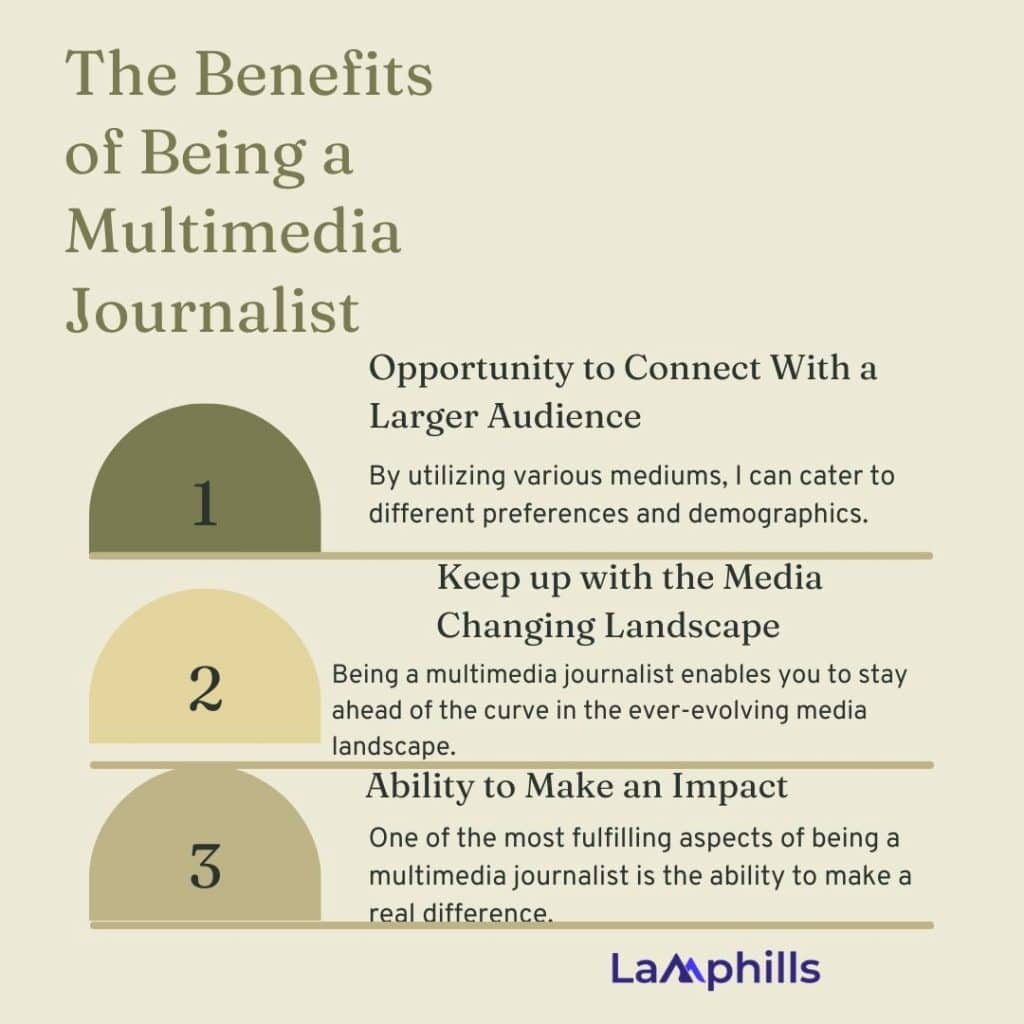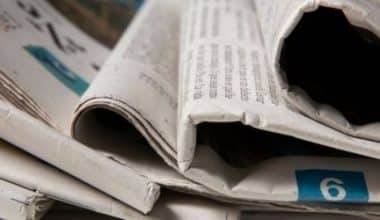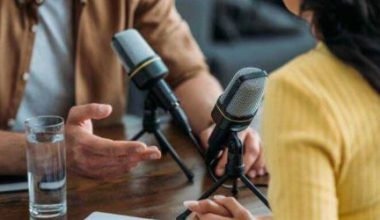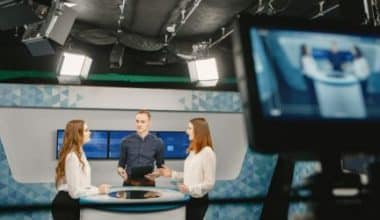When I think about journalists who have truly left an unfading mark on the world, names like Christiane Amanpour, and Baldwin instantly come to mind. These remarkable individuals have not only shaped the way we consume news but have also become integral parts of our daily lives. They are not just reporters; they are storytellers, investigators, and relentless truth-seekers. Their work has taken them from uncovering political scandals to reporting from the heart of war zones, bringing the world’s stories to our screens and newspapers with unparalleled dedication and skill. In this article, I’ll go into the lives and careers of these most famous journalists, exploring what makes them stand out in the crowded field of journalism.
Key Points
- Journalists give a voice to the voiceless, shine a light on injustice, and hold the powerful in check.
- Multimedia journalism is an exciting field that mixes different types of media to tell a story.
- Martha Gellhorn shattered barriers as one of the first female war correspondents. She jumped right into the Spanish Civil War and then bounced around the globe.
- Being a famous journalist is not pleasant or easy work, rather, it takes real courage to stand up to those in power and put yourself in danger to reveal the truth.
- Multimedia journalism is about storytelling in the digital age. It’s about using every tool at my disposal to inform, educate, and inspire audiences in an increasingly interconnected world.
Famous Journalists
A journalist is someone who gathers and reports on news. Being a famous journalist is not pleasant or easy work, rather, it takes real courage to stand up to those in power and put yourself in danger to reveal the truth. But the payoff is huge. Journalists speak up for those who can’t, highlight unfairness, and keep the powerful in line. They act as democracy’s watchdogs, ensuring everything fits together in our world. Here are a few journalists who have really caught my eye.
#1. James Agee
You might know James Agee for his beautiful prose in “Let’s Eat,” but he started as a journalist. Agee had this incredible eye for detail, capturing the raw humanity in everyday moments. He traveled through the Depression-era South, sitting with sharecroppers, and documenting their struggles with such tenderness. He didn’t just write stories; he lived them as he sat with families, listening intently as they shared their hardships.
Agee’s work wasn’t just reporting; it was a heartfelt movement into the soul of America during its toughest times. His keen eye for detail and the raw humanity captured in his work make his journalism unforgettable.
#2. Christiane Amanpour
Christiane Amanpour is the epitome of fearless journalism. She goes where the action is, often landing in war zones and political hotspots. She started working at CNN as a lowly assistant in 1983 and then reported on every global news – Iraq, Afghanistan, North Korea, you name it. I still remember being glued to the screen when she interviewed Gaddafi, and, surprisingly, she did not flinch, her sharp questions cutting through the chaos.
I imagined being in her shoes and having myself deliver hard-hitting questions in the most dangerous places on Earth. Amanpour’s commitment to holding powerful figures accountable is inspiring, she showed us what true journalistic courage looks like.
#3. Hannah Arendt
Hannah Arendt wasn’t a reporter in the traditional sense, but her work as a political philosopher had a journalistic edge. Her book, The Origins of Totalitarianism, tackled complex themes like anti-Semitism and the rise of totalitarian regimes. Arendt made us confront uncomfortable truths about power and society.
Her analysis of the human condition and politics is as relevant today as it was then. She used her sharp intellect to shine a light on the darkest corners of politics.
#4. Russell Baker
Russell Baker brought humor into journalism with his masterful satire. He had a unique talent for making readers laugh while making them think critically about politics. His witty observations and clever writing style made complex political issues accessible and entertaining.
As a columnist for The New York Times and host of PBS’s Masterpiece Theatre, Baker was good at treating serious issues with gentle humor. Baker showed that journalism doesn’t always have to be serious to make a point. Sometimes, a good laugh can be just as powerful.
#5. James Baldwin
He tackled race relations in America with unflinching honesty, forcing us to confront the ugliness of racism. His works, like The Fire Next Time, were not just essays but calls to action. Baldwin’s words were clear, psychologically penetrating, and often controversial.
His work in the 1960s portrayed the weight of his incisive anger and the hope for change. Baldwin’s journalism was raw and necessary, pushing society to reflect and improve. He used his platform to spark change and make people think deeply about society’s flaws.
#6. Nellie Bly
Nellie Bly revolutionized investigative journalism with her fearless undercover work. In the late 1800s, she exposed the horrors of mental asylums by pretending to be insane, leading to significant reforms. Imagine her sneaking into these institutions, her courage is unmatched. Bly didn’t just report; she lived her stories, bringing a unique authenticity to her work. Her journey around the world in 72 days showcased her adventurous spirit and determination. Nellie Bly showed us the power of immersive, hands-on journalism.
These journalists, with their diverse approaches, show the incredible range of journalism. Whether documenting humanity’s struggles, holding power to account, dissecting complex ideas, or using humor to make a point, journalism is about truth and making a difference. Each of these famous journalists brought their unique voices and perspectives, reminding us why journalism is essential.
I provided an application template for the job of a Journalist
You could become famous, too
Famous War Journalists
These war journalists put themselves in the line of fire to bring us stories from the front lines of the war. Their bravery and dedication help us understand the harsh realities of war. These brave journalists found themselves, capturing history in the making during war histories like World War II or the pulse-racing chaos of the Middle East. Their work shaped how we understand the conflicts that have left their mark on generations. Here are six famous war journalists whose work has made a significant impact:
#1. Ernie Pyle
Ernie Pyle was a beloved war journalist during World War II. Known for his vivid storytelling, he had a unique ability to make readers feel the emotions of soldiers. Pyle’s reports focused on the human side of war. His work showed the personal struggles of the men fighting on the front lines. Pyle’s life ended tragically when he was killed by enemy fire in the Pacific theater. His legacy lives on through the honest, heartfelt stories he left behind.
#2. Martha Gellhorn
Martha Gellhorn is one of the most famous war journalists, known for covering conflicts from the Spanish Civil War to Vietnam. Gellhorn’s fearless approach took her right into the heart of battle. She reported on the human suffering and political complexities of war with a sharp eye and a compassionate heart. Gellhorn once disguised herself as a stretcher-bearer to witness the D-Day landings firsthand. Her work remains a testament to her courage and dedication.
#3. Robert Cap
Robert Capa was a legendary photojournalist, he captured some of the most iconic images of the 20th century. As a famous war journalist, his photographs from the Spanish Civil War, World War II, and the First Indochina War are powerful reminders of the chaos and horror of war. His famous D-Day photos, though few survived, showed the raw intensity of the invasion. Capa’s philosophy, “If your pictures aren’t good enough, you’re not close enough,” defined his career. He died stepping on a landmine in Vietnam with his camera in hand.
#4. Edward R. Murrow
Edward R. Murrow became a household name during World War II with his radio broadcasts from London. As bombs fell, Murrow’s calm, steady voice brought the war into American homes. His reports were clear, direct, and gripping. Murrow’s ability to convey the tension and urgency of the moment made him one of the most famous war journalists of his time. His work set the standard for broadcast journalism.
#5. Marie Colvin
Marie Colvin was a fearless war journalist known for her eye patch and uncompromising reporting. Covering conflicts in Chechnya, Sierra Leone, and Syria, Colvin’s stories often highlighted the plight of civilians. Her commitment to telling the truth was unwavering, even at great personal risk. Colvin was killed in a targeted attack in Syria, but her legacy as one of the most famous war journalists endures through her powerful, humane reporting.
#6. Sebastião Salgado
Sebastião Salgado was a Brazilian photojournalist and is renowned for his poignant images of human suffering in conflict zones. Though not always on the front lines, his work as a famous war journalist has documented the impact of war on communities. Salgado’s photographs from Rwanda, Bosnia, and other war-torn regions are haunting and deeply moving. His ability to capture the human cost of war makes his work stand out.
Multimedia Journalism
Multimedia journalism is an exciting field that mixes different types of media to tell a story. When I first stepped into this world, I felt like an explorer. Instead of sticking to just words, I used videos, photos, audio, and graphics to bring my stories to life. Each element plays its part, creating a richer, more engaging narrative.
In multimedia journalism, you start with the basics, and like any traditional journalist, you gather facts and interviews. But then, you think beyond the written word. Maybe your story about a local festival needs the vibrant colors and sounds of the event. So, you shoot videos, capturing the laughter and music. You take photos that freeze moments in time, showing expressions that words can’t fully capture.
My favorite part is editing. This is where multimedia journalism truly shines. You sit down with all your materials and start piecing them together. It’s like crafting a mosaic. Each piece of the video clip, audio snippet, and images, adds depth and context. For instance, an interview clip might give your audience a personal connection to your subject, while a photo gallery highlights the broader context.
One memorable experience in my multimedia journalism career was covering a local protest. I recorded interviews with passionate voices, took dynamic photos of the crowd, and captured the ambient sounds of chanting and drumming. Combining these elements, I created a story that felt immediate and powerful. People didn’t just read about the protest, rather, they saw it, heard it, and felt its energy.
Multimedia journalism requires you to be versatile. You’re not just a writer; you’re also a videographer, photographer, and sometimes even a graphic designer. It’s challenging but incredibly rewarding. You tell stories that resonate on multiple levels, drawing people in with the richness of different media. In the end, multimedia journalism is all about bringing stories to life as vividly and engagingly as possible.
Top Multimedia Journalism Skills Every Reporter Needs
I spent years on the ground as a multimedia journalist, and I have learned the hard way what it takes to thrive in this fast-paced field. Today, I’ll share the top multimedia journalism skills every reporter needs, based on my own experiences.
#1. Storytelling
This is the heart of journalism. Good storytelling pulls people in. It’s not just about facts; it’s about crafting a narrative. I remember covering a small-town festival. Instead of just reporting the events, I focused on the stories of the people I met. Their excitement, their traditions. That’s what made the piece memorable.
#2. Video Production
Multimedia journalism isn’t complete without video. You need to shoot, edit, and produce your own content. I started with a simple camera and basic editing software. Now, I can create engaging videos on the fly. One time, I captured a breaking news story with just my smartphone, I did a quick edit and it was up online within minutes.
#3. Social Media
This is where news breaks first and where audiences engage. Posting updates, photos, and videos in real time is important. I’ve found Twitter and Instagram invaluable. One time during a protest, I live-tweeted events as they unfolded, and gained new followers and credibility.
#4. Photography
Strong visuals complement your story. You don’t need to be a professional photographer, but basic skills are a must. I’ve taken some of my best shots in the most unexpected moments. Like when I covered a local farmer’s market and captured the vibrant colors and smiling faces that told the story better than words ever could.
#5. Audio Production
Podcasts and audio clips add another layer to your storytelling. Learning to record clear, crisp audio and edit it effectively makes a big difference. I remember producing a podcast about local history. The interviews, ambient sounds, and my narration created an immersive experience for listeners.
#6. Research
Good research underpins every story. Digging deep and verifying facts ensures credibility. I once spent weeks investigating a local corruption scandal. The research paid off with a compelling, well-supported story that made waves in the community.

The Benefits of Being a Multimedia Journalist
Being a multimedia journalist comes with a lot of work, which makes it a dynamic and rewarding profession. Firstly, there’s the sheer versatility. As a multimedia journalist, I get to do multiple tasks, seamlessly transitioning between writing, photography, videography, and audio production. This versatility not only keeps things fresh and exciting but also allows me to tell stories in the most engaging and impactful way possible.
#1. Opportunity to Connect With a Larger Audience
Another major benefit is the opportunity to reach a broader audience. By utilizing various mediums, I can cater to different preferences and demographics. Whether it’s through written articles, stunning visuals, captivating videos, or immersive audio, I can effectively connect with people across various platforms and channels.
#2. Keep up with the Media Changing Landscape
Being a multimedia journalist enables me to stay ahead of the curve in the ever-evolving media landscape. I’m constantly learning new skills and techniques to adapt to emerging technologies and trends. This not only keeps me professionally relevant but also opens up doors to exciting career opportunities.
#3. Ability to Make an Impact
One of the most fulfilling aspects of being a multimedia journalist is the ability to make a real difference. Through my storytelling, I can shed light on important issues, give voice to the voiceless, and inspire positive change in the world. Whether it’s raising awareness about social injustices, highlighting inspiring human stories, or providing valuable information to the public, I have the power to effect meaningful impact through my work.
Who Was the First Journalist?
The concept of the “first journalist” can be complex due to the evolution of journalism over centuries and across different cultures. However, one of the earliest figures often credited as the first journalist in a modern sense is Julius Caesar, who started the Acta Diurna in 59 BCE. The Acta Diurna, or “Daily Acts,” was a handwritten bulletin posted in public places in Rome, containing official announcements and news of public interest.
Another early figure is Publius Cornelius Tacitus, a Roman historian who lived in the 1st century CE and whose works include detailed historical accounts and analysis, blending reporting with commentary.
In a different tradition, Benjamin Harris is notable for publishing the first multi-page newspaper in the American colonies, “Publick Occurrences Both Foreign and Domestic,” in 1690.
What Is a Female Journalist Called?
A female journalist is simply called a journalist. The term “journalist” is gender-neutral and applies to individuals regardless of their gender. In some contexts, people might use the term “female journalist” to specifically indicate the gender of the journalist, but this is usually unnecessary unless the context specifically requires it. Generally, the profession and its title do not change based on gender.
Who Is the Youngest Journalist in the World?
As of my last update in January 2022, it’s challenging to pinpoint the absolute youngest journalist in the world because there are many young individuals globally who engage in journalism through various platforms, such as school newspapers, blogs, and social media. The youngest journalist may vary depending on the criteria used, such as age, publication reach, or recognition.
However, there have been notable cases of very young journalists gaining attention for their work. For example, Hilde Lysiak gained widespread recognition for her newspaper, the Orange Street News, which she started at the age of 9. She has since garnered international attention for her reporting.
It’s also worth noting that in the digital age, there are likely many talented young journalists using online platforms to share their stories and perspectives, making it difficult to determine a single “youngest” journalist definitively
Related Articles
- The Top 2024 Business Journalists & Everything You Need
- Top 10 Journalists in the World: Our Reserached List 2024 (Updated)
- The Top 2024 Brand Mention Tools (All You Need)
- MEDIA ANALYSIS: How To Conduct An Effective Media Analysis





